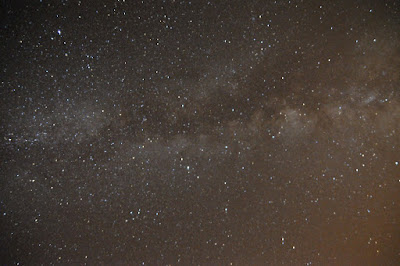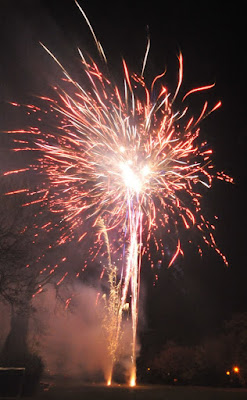Tenerife July 2010
Went back to Tenerife, because firstly its very nice for a family holiday, and secondly because we wanted to go the very top of the volcano.
We did the star gazing again, though it wasn't quite as good because the moon had only just set so the sky was too bright.
And we did Garachico
And Los Gigantes.
To get to the very top requires a permit, so we went to Santa Cruz to get one, and came across the Auditorio de Santa Cruz. Designed by Calatrava, it is very impressive, and is home to the Tenerife Symphony Orchestra.
Tenerife August 2009
The highest mountain in Spain, its one of the worlds largest mountains taken from the base at the bottom of the Atlantic Ocean, at over 23,000' / 7000m. Still active today, with a special permit you can walk to the very top, feeling the steam and sulphur vents along the way. We didn't know about
the special pass, so we only made it as high as the cable car station.
Its not the best value trip, but it does give fantastic views from the
top.
At the top its 12,198'' / 3718m above sea level, and is a very conical volcano indeed, looking like a giant nipple from many directions.
The centre of the island is a huge caldera from previous eruptions, and its only a matter of time before it goes again.
One big reason for going there is to go star spotting. Forget the organised tours which are super expensive, just hire a car and drive yourself. The maps are excellent and there are so few roads in the interior that its hard to get lost. The album linked below even has the GPS co-ordinates of the best place to go, which is where the tour takes you anyway. And don't take young kids, they'll get bored and you won't appreciate the expense of their ingratitude.
I didn't take my tripod, so my star and milky way photos were taken with the camera on the roof of the car. To prevent getting star trails, unless thats what you intend, the shutter speed needs to talk account of the focal length / angle of view of the lens. A wider lens means angle subtended per pixel is less, which means you can use a longer speed. A picture such as
had the settings
Other interesting sights are:
Garachico where the locals have turned solidified lava into swimming pools and features
Los Gigantes which has giant cliffs 1600' / 500m above sea level. Try to go early as it can get crowded, and also the weather clouds over.
If you like sunshine, then avoid the north coast, which due to prevailing winds and topology is very cloudy even in summer. The south-west, by contrast, can start cloudy but often clears by mid mornings.
At the top its 12,198'' / 3718m above sea level, and is a very conical volcano indeed, looking like a giant nipple from many directions.
The centre of the island is a huge caldera from previous eruptions, and its only a matter of time before it goes again.
One big reason for going there is to go star spotting. Forget the organised tours which are super expensive, just hire a car and drive yourself. The maps are excellent and there are so few roads in the interior that its hard to get lost. The album linked below even has the GPS co-ordinates of the best place to go, which is where the tour takes you anyway. And don't take young kids, they'll get bored and you won't appreciate the expense of their ingratitude.
I didn't take my tripod, so my star and milky way photos were taken with the camera on the roof of the car. To prevent getting star trails, unless thats what you intend, the shutter speed needs to talk account of the focal length / angle of view of the lens. A wider lens means angle subtended per pixel is less, which means you can use a longer speed. A picture such as
had the settings
- ISO: 2500
Exposure: 30.0 sec
Aperture: 2.8
Focal Length: 17mm
Other interesting sights are:
Garachico where the locals have turned solidified lava into swimming pools and features
Los Gigantes which has giant cliffs 1600' / 500m above sea level. Try to go early as it can get crowded, and also the weather clouds over.
If you like sunshine, then avoid the north coast, which due to prevailing winds and topology is very cloudy even in summer. The south-west, by contrast, can start cloudy but often clears by mid mornings.
London in the Spring

From London can be Nice
Sometimes though, spring arrives early, and its glorious as early as March like it was in 2010.
Ferrari super cars near London
Happened to pass a Ferrari race engineering company one day... Ferraris everywhere. All kinds from 250s F40s F50s I can't name them all, plus an E-Type Jag and a Lamborghini.
Where've I been since June 2009?

Yes I'm blogging again. Although Its been a while since the last blog about my travels, I've still been travelling, still taking photographs. In no particular order:
Tenerife
San Francisco
Sydney
Wellington
Auckland
Rotorua
Perth
Brisbane
Melbourne
Singapore
I'm sure I've missed a few. Anyway, over the next few days and weeks I'll try and do some catching up.
Sculpture by the Sea, Bondi to Tamarama
It was only by chance I found about this annual exhibition. And what a treat it is!
The sculptures are whimsical and fun and thought provoking.
Now is its 15th year, it is very very popular. We got there at 9am and had trouble parking and it was already busy. The effort the artists have gone to is substantial, knowing it'll all be gone in 10 days.
www.sculpturebythesea.com
Bonfire / Guy Fawkes Night
From 1605 to the 21st Century. Thats 500 years and still going strong.
A proper Guy Fawkes night is cold and clear. There's a huge bonfire, kids have sparklers, and most people go to organised displays, although since you can still buy fireworks for personal 'consumption' many folks have a party in the own gardens. Before the advent of the large organised display we always used to have our own fireworks.
After some trial and error, my preferred setting for taking photographs of fireworks is
- ISO 200
3s
f/5.6
The 3s exposure gives you nice trails. Go to manual focus, set to infinity, and set the aperture at f/5.6 or f/8. If the image is too dark then increase the ISO. I made the mistake of thinking I needed a small aperture, and also left the camera on auto-focus. Well mistakes are there to be learned from!
I used a timer device on the Nikon. Camera on B (bulb) and the timer set for 3 or 5 seconds. Take picture after picture. You cannot predict when you'll get something nice, so take as many as possible!
Here's some from a couple of years ago
San Francisco January 2010
It was in January 2010 that I discovered a new photographic tool: ImageFuser. It solves a very common problem of dynamic range, but doesn't make HDRs with their hyper-real false colour.
The picture above is a fusion of 3 or 4 images where ImageFuser takes the best exposed pixels.
Also on this trip, because its winter in the Bay Area, the clouds and weather are a little different.
Lovely!
The picture above is a fusion of 3 or 4 images where ImageFuser takes the best exposed pixels.
Also on this trip, because its winter in the Bay Area, the clouds and weather are a little different.
Lovely!
Subscribe to:
Comments (Atom)























